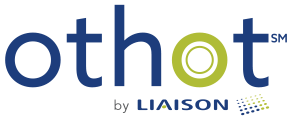Over the past two decades, buying student names from the ACT, College Board, and other sources has become the standard for enrollment professionals under pressure to meet enrollment targets and find best-fit students. After all, competition for students is fierce and prospective students often apply to numerous potential schools.
The New York Times reports that, “10 applications is now commonplace; 20 is taking on a familiar ring; even 30 is not beyond imagining.”
To reach these students, institutions will undoubtedly buy lists of prospective students and send them messages designed to persuade them into choosing their school above the rest.
However, as every higher ed marketer knows, checking “buy list” off your own to-do’s is an unenviable task. Here’s why:
- Cost: Mailing lists are expensive. The Atlantic reports 42 cents per name, a 31% increase since 2010. That eats up big chunks of budget before ever sending a marketing campaign.
- Strategy: The cost escalates with each additional list buy. Institutions need to be confident they have sufficient names in the pool to make their goal, so they may keep buying lists until they think they have enough. It’s like buying thousands and thousands of oysters to increase the probability you’ll find 100 perfect pearls. It may work, but it’s not an optimal strategy.
- Targeting: Chances are these institutions will be throwing valuable marketing dollars and admissions resources at students who are highly unlikely to attend their institution.
We get that list-buying, and the outreach that follows is an accepted rite of enrollment marketing. But we also know there’s a way to get a better return on every dollar spent.
Many higher education institutions are turning to predictive modeling strategies to optimize enrollment and retention rates. That same data science enables an institution to make smarter, data-driven choices before and after they buy prospect lists.
Recently, one of our customers asked us to evaluate their list purchase. We used the same historical models we built to help them increase enrollment and find best-fit students, and put them to work estimating which students from their new list would be likely to enroll.
The result?
A more educated list buy the next time around.
Before You Buy
Predictive modeling can indicate which list sources have been most effective for an institution in the past. That alone may not seem impressive. But deeper analysis can reveal that the secret sauce was not the list source; but rather the variables they provided. Certain variables are far more influential than others in predicting who will enroll at a specific institution – so you should aim to buy lists that have robust data in the variables that hold the greatest predictive value for your specific data set.
And to further complicate the issue, some data sources might be strong on those variables for some states but weak on the same variables from other states.
For example, you want to enroll more at-risk students with high academic profiles, so you’re buying names of students from low-income areas. Predictive modeling could show that your go-to list source in previous years produced low-income names with high enrollment probabilities from Pennsylvania and New Jersey but low probability names from New York and Virginia. So this time, it might behoove you to purchase your low-income-area New York and Virginia names from another source.
The bottom line: before buying a list, predictive modeling can pinpoint the characteristics that define names that are more likely to convert to applications and enrollment - and which to avoid.
After You Buy
After a list purchase, predictive modeling offers three critical insights that can save money AND give a better return on investment.
- Know how many names
Predictive modeling can show you how many students you can expect to enroll from your purchased mailing lists. If that number meets your goal, then arguably, you don’t need to buy more lists. If the number doesn’t meet the goal, you can evaluate the next list buy and so forth until the data allows you to comfortably say “no need to buy any more names.” This eliminates guesswork and enables you to justify your choices. - Know what to look for in subsequent list purchases
When evaluating an initial list buy, predictive modeling may uncover variables or characteristics that are either highly predictive of enrollment outcomes or are common among the highly likely/unlikely students. Knowing these variables can inform future list purchases (i.e., buy more of these and less of those). - Know where to focus marketing budget and recruiting resources
To better manage costs and get the biggest return on every dollar they spend, enrollment professionals prefer to direct their high-leverage marketing campaigns and recruiting outreach to prospects who are most likely to enroll. Advanced analytics makes this easy. We recently evaluated names in a pool for one of our customers, and our predictive modeling software showed them which 20% of their names would produce 90% of their next class. That kind of insight makes it clear where to focus high-leverage dollars and resources. Finally, if the names from a list purchase come with probability scores, it’s worth pointing out the difference between static predictive modeling and dynamic predictive modeling. The probability scores that come with purchased names are static: they capture a single moment in time and don’t consider what happens over the 18-24 month enrollment life cycle that follows. A student that was scored very low initially could have a much higher probability six months later. We advocate adopting a solution that provides real-time probability scores that get dynamically updated throughout the cycle.
Using predictive modeling techniques can help make smarter list buys AND get a better return on the marketing and recruiting outreach that follows. Predictive modeling for higher education transforms a wide, expensive throw of a net into smarter, data-driven choices and decisions.
Claire Juozitis



